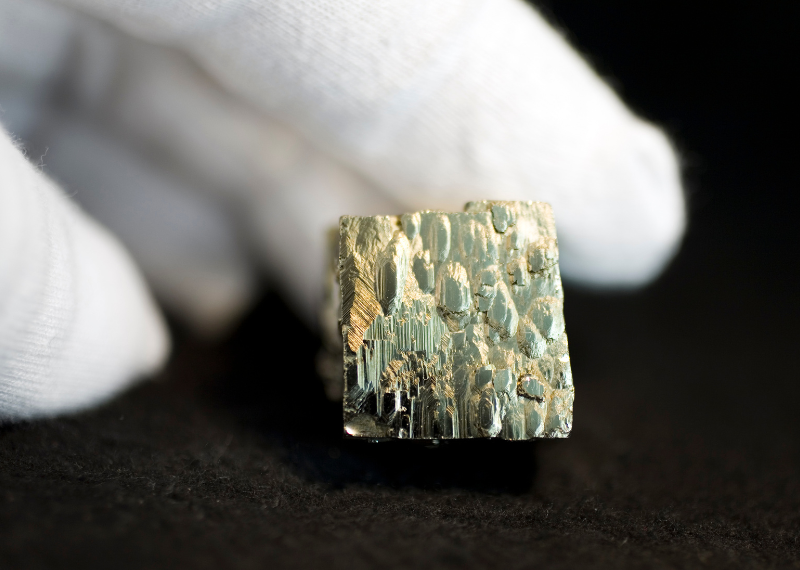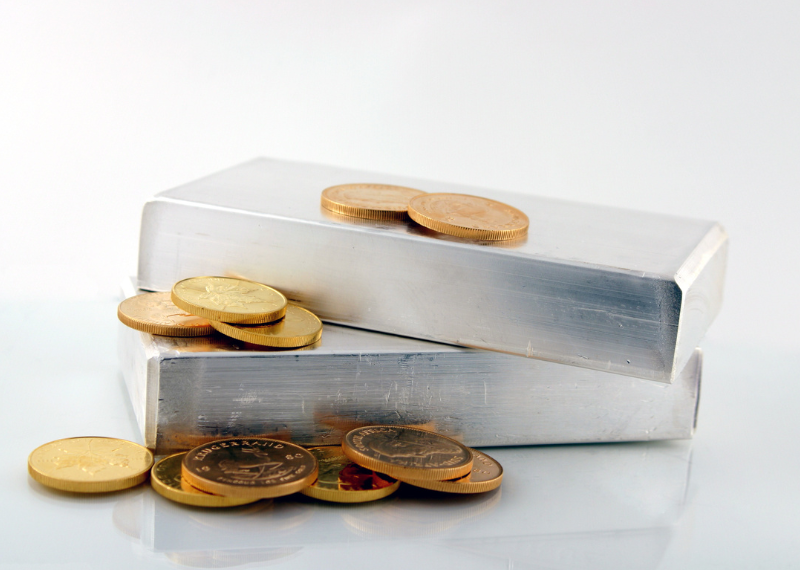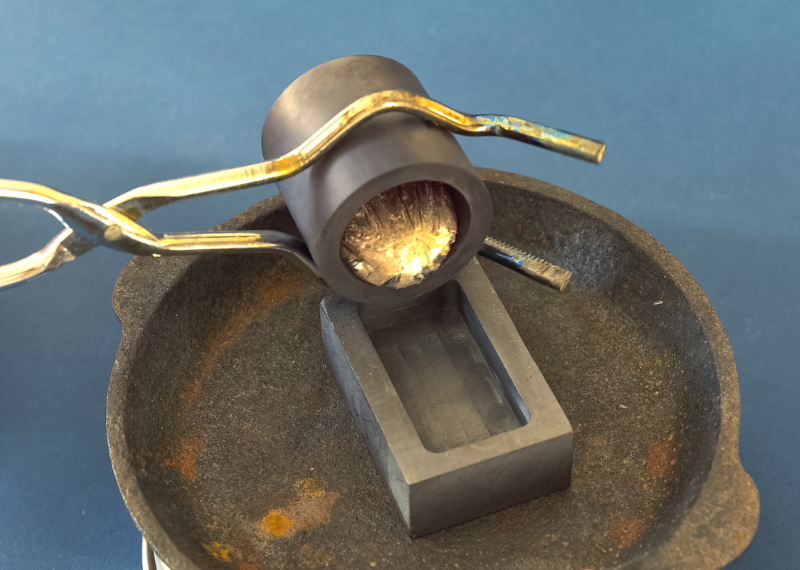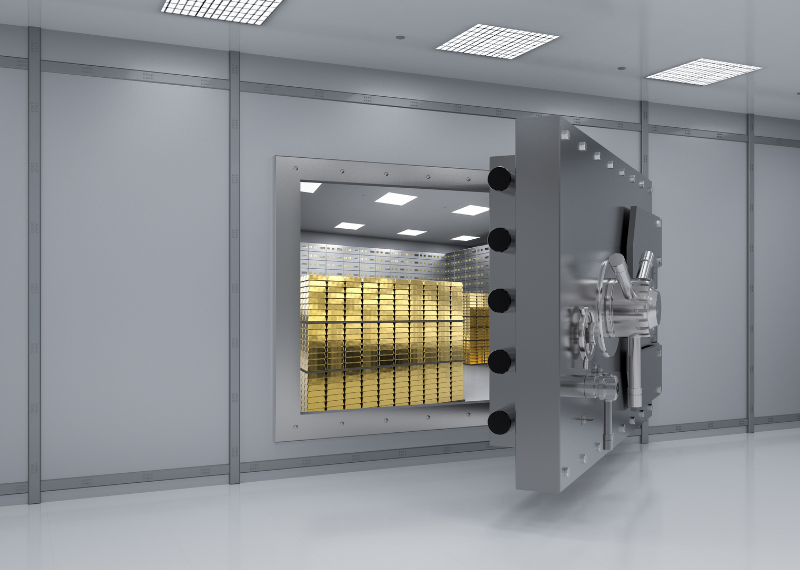A Beginner’s Guide: Buy Silver, Gold and Platinum Smartly

Welcome to Sprott Money, your trusted source for high-quality investment-grade precious metals. We're not only passionate about offering you the best precious metals in the industry but also dedicated to educating and empowering you in the world of precious metal investments. Our commitment to enhancing your knowledge is reflected in our comprehensive guide: "Beginner’s Guide To Precious Metals: Buy Silver, Gold, and Platinum Smartly."
We firmly believe that a strong foundation of knowledge is crucial for confident investing in precious metals. Our guide equips you with essential terminology and an understanding of the economic context of the precious metals market, ensuring that your investment decisions are well-informed.
Key Terms for New Precious Metals Investors

- Precious Metal: A rare, economically valuable metal with applications in jewelry and investments. Gold, silver, platinum, and palladium are the most well-known precious metals.
- Bullion: This term describes precious metal bars, rounds, and ingots produced by mints. The value of bullion depends on the purity and weight of the precious metal content.
- Gold Bullion: A soft, malleable precious metal with a bright yellow color, widely used in jewelry and investment. Symbolized as Au, gold is renowned for its monetary and symbolic value.
- Silver Bullion: A white, soft precious metal known for its malleable characteristics. Silver is commonly found in jewelry, high-valued utensils, and as coins and bars for investment. Symbolized as Ag, silver has numerous industrial and commercial uses.
- Platinum Bullion: A gray-white precious metal that is highly malleable and ductile, with applications ranging from industrial equipment to jewelry and investment. Platinum is valued for its scarcity and high worth.
- Troy Ounce: A unit of measure specifically used for precious metal mass. One troy ounce is not the same as the common ounce and is equivalent to approximately 31.1 grams.
Investment Grade: Indicates a high level of purity in precious metal products, making them tax-free. For example, gold is considered investment grade at 99.9% purity, and silver at 99.99%. - Purity/Fineness: Purity or fineness measures the percentage of a precious metal in an object. Currently, the highest purity for investment-grade gold is 99.999%.
- Face Value: This represents the monetary value printed on a coin, often set by the government. It should not be confused with the actual value of the coin, which is based on the spot price of gold.
- Legal Tender: A medium of payment recognized by law and the government. Coins produced by government mints are recognized as legal tender due to their face value.
Types of Bullion

What forms of precious metals can I buy?
Precious metals can be bought as physical coins, rounds, bars, paper ETFs, futures and trusts.
- Coins: Precious metals that have a face value, as set by the government. The value is based on the amount of precious metals in a coin.
- Rounds: Coin-shaped bullion that do not hold any face value. They are not backed by the government and thus, are not considered legal tender.
- Bars: Bullion that is shaped into bars, sheets, wafers or plates. Like rounds, they do not hold any face value.
What is the difference between rounds and coins?
- Coins are minted exclusively by a government-backed sovereign mint and bear a face value. Rounds are coins that do not have a face value and can be minted by a private or sovereign mint.
What is the difference between physical precious metals and ETFs?
Physical precious metals are tangible assets that investors can possess and own. An exchange-traded fund (ETF), on the other hand, is a commodity exchange traded fund consisting of gold or silver-backed contracts and derivatives. They are also a form of “paper” investments. When a gold ETF is redeemed, you do not receive the precious metal but the cash equivalent.
Mints in the Precious Metals Industry

Mints, whether private or government-backed, are essential facilities responsible for producing precious metals in the form of bullion bars and coins. Here are some examples of prominent minting companies worldwide:
- Royal Canadian Mint – Canada
- Australian Perth Mint – Australia
- US Mint – United States
- The Royal Mint – United Kingdom
- PAMP Suisse – A private mint in Switzerland
- Sunshine Mint – A private mint in the United States
(Note: Government Mints are also involved in precious metals production.)
Determining Precious Metals Prices
Understanding how precious metals prices are determined is crucial for investors. Here are some key concepts:
- Spot Price: This represents the current market price at which gold, silver, and platinum can be acquired on the spot market. Spot prices are constantly changing as they respond to market dynamics.
- Spot Market: The spot market is where gold, silver, and platinum are bought and sold for immediate delivery, providing a real-time trading platform.
- Ask Price and Bid Price: The "Ask price" is the rate at which precious metals are sold to consumers, while the "Bid price" represents the rate at which precious metals are purchased from consumers.
- Premium: This is an additional dollar or percentage amount added to the spot price to determine the final product price. Premiums are applied by precious metals dealers, mints, or banks.
- Spread: The "spread" is the difference between the asking and bidding price of a product. It plays a crucial role in determining the profit potential of a precious metals investment.
- Volatility: Volatility indicates the relative rate at which the price of precious metals fluctuates. High volatility suggests rapid price fluctuations, while low volatility means relatively stable prices.
- Calculating Live Product Prices: When purchasing gold, silver, or platinum from a dealer, distributor, or bank, live product prices are calculated by adding a premium to the spot price of the metal.
- Coins vs. Bars: The difference between coins and bars primarily lies in their value and production costs. Coins, having legal tender status and face value, command a higher premium compared to bars, which do not have legal tender status.
- Factors Influencing Premiums: Various factors can influence the premiums on precious metals, including size, purity, country of origin, minting company, and supply and demand.
How to choose your dealer:
- Check to see if your dealer is listed on the Better Business Bureau or similar rating agency and if so, what their rating is.
- If it seems too good to be true, it probably is.
- Verify that your dealer does not back order products to avoid not fulfilling your order after payment has been submitted.
- Google search
Where should I store my precious metals?

There are many options for investors in terms of precious metals storage. Some choose to store it within their own homes while others choose to store it in safety deposit boxes in banks. Sprott Money offers precious metals storage options in Canada, U.S., Singapore, Switzerland and the Cayman Islands. All our facilities are private and non-bank.
What does ‘allocated’ and ‘segregated’ precious metals storage mean?
‘Allocated storage’ means that your precious metals are recorded under your name and you hold direct ownership of the metals.
‘Segregated storage’ means that your precious metals are stored separately from others in individual boxes assigned to each client.
How to choose your storage facility:
- Location – To prevent the government and the banks from “bailing-in” (confiscate) your precious metals in times of financial difficulty, find a storage facility that is private and outside the banking system. Having a storage facility that is located in a politically and economically stable country is also important because it offers you the added sense of security and peace of mind.
- Allocated & Segregated–Make sure the storage facility you choose offers allocated storage so that you have direct ownership of your precious metals. If you do not wish your precious metals to be mixed up or comingled with other clients’ metals, make sure your storage facility offers segregated storage as well.
- Insurance–Your precious metals should be fully insured by your storage facility or program so that in the event of loss, theft or physical damage to your metals, you will be fully compensated.
- Fees–Find the most affordable storage program while being cautious of scammers and con artists. Remember, “if it seems too good to be true, it probably is". Generally, fees are calculated on “basis points” which are annual percentage rates, based on how much you are storing (volume) or based on the total value of your storage inventory.
- Audit–Ensure the storage facility you choose under goes external audits from a reputable accounting firm at least once a year. Storage facilities that allow you to go in to see and count your metals for yourself are a plus.
Precious Metals Market Terms Explained
Understanding important terms is critical when navigating the world of precious metals. Here are some key definitions:
- COMEX: The Commodity Exchange, Inc. (COMEX) is a division of the New York Mercantile Exchange (NYMEX) specializing in the trading of Gold and Silver.
- London FIX: This is the process by which the daily price fix for gold and silver is established on the London market. The London Bullion Market Association (LBMA) members determine these prices based on buy and sell orders, serving as a widely recognized benchmark for precious metals products pricing.
- LBMA (London Bullion Market Association): LBMA is a major player in the wholesale over-the-counter market for gold and silver trading.
Gold/Silver Ratio: This ratio indicates how many ounces of silver it takes to buy one ounce of gold. Investors use this ratio to assess the relative value of silver, which can guide their decisions on whether to invest in gold or silver. - Central Bank: Central banks manage a nation's currency, money supply, and interest rates while overseeing the commercial banking system. Examples include the Federal Reserve (Fed) in the United States and the European Central Bank (ECB).
- Federal Reserve (FED): The Federal Reserve is the central banking system in the United States, comprised of 12 regional Federal Reserve Banks, the Federal Open Market Committee (FOMC), a Board of Governors, and various privately-owned member banks. Its primary objectives include maximizing employment, maintaining stable prices, and ensuring moderate long-term interest rates. Designed with both private and public components, the Fed serves the interests of both private bankers and the general public.
- Fiat Money: Fiat money is inconvertible paper currency made legal tender through government decree. Examples include the US dollar, British Sterling, and the Euro.
- Bull/Bear Market: A bull market signifies a thriving market with rising prices, while a bear market is characterized by stagnation or declining prices, resulting in market downturns.
Find out more on our blog or call us directly at 1-888-861-0775
Don’t miss a golden opportunity.
Now that you’ve gained a deeper understanding about gold, it’s time to browse our selection of gold bars, coins, or exclusive Sprott Gold wafers.
About Sprott Money
Specializing in the sale of bullion, bullion storage and precious metals registered investments, there’s a reason Sprott Money is called “The Most Trusted Name in Precious Metals”.
Since 2008, our customers have trusted us to provide guidance, education, and superior customer service as we help build their holdings in precious metals—no matter the size of the portfolio. Chairman, Eric Sprott, and President, Larisa Sprott, are proud to head up one of the most well-known and reputable precious metal firms in North America. Learn more about Sprott Money.
Learn More
You Might Also Like:
















Looks like there are no comments yet.